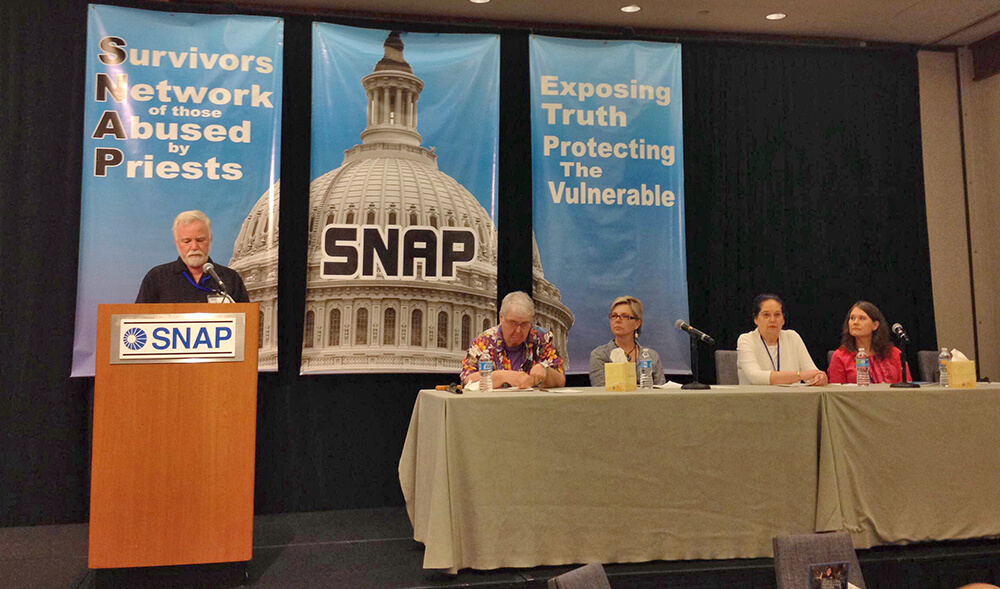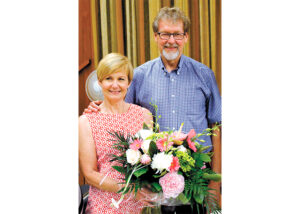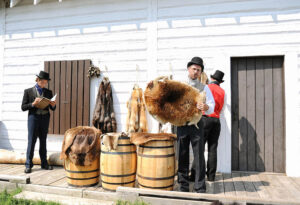(The following article discusses a difficult topic in story form. All characters are fictional, although the events referred to are based on an amalgamation of true experiences.)
She went to her pastor for advice, not sex.
Another woman accepted her pastor’s invitation to chair a committee he oversaw, not an invitation to be sexually preyed upon.
And still another woman was encouraged by her pastor to enter the ministry, not to enter a sexual relationship with her seminary professor, who was also the on-campus pastor.
Each of these women thought they knew what they had agreed to. None of these women ever expected a pastor to do something so egregious as to manipulate them into having sex with him. The worst part of it was that each woman blamed herself for having an “affair” with her pastor and each woman hid silently in her shame. By holding his secret, each woman protected the trusted authority figure who had betrayed her.
Experts estimate that 90 to 95 percent of all victims of clergy sexual abuse are adult. But because they’re adults, what happened between them gets erroneously labelled an “affair.” In fact, what occurred was an abuse of power. Sex between two parties where there is a power differential is not and can never be labelled an “affair.” Sex between persons with unequal power is not even about sex. It’s about power and control over someone with less power.
If any one of these three women were to have been approached by a stranger at a party, she would have easily detected his sexual advances. But each was caught completely off guard when her pastor became amorous. Each thought she was making more out of the situation than her pastor intended. Each woman ignored her screaming intuition warning her that something was terribly wrong. None of the three women was prepared to rebuff her pastor, because each held him in the high esteem afforded by his position. On top of that, none of them wanted to “offend” their pastor by refusing his pastoral hug the first time, and it became increasingly awkward to refuse to hug him each time after that.
Each of these women was unaware that their pastor was subtly manipulating them to the point where their ability to say “no” was completely undermined. But just because they didn’t say “no,” does not mean they said “yes.” The problem was not that each woman was vulnerable because she had less power than her religious leader. The real problem was that each of the pastors—the ones with the power in each situation—preyed upon and exploited each woman’s vulnerability.
Each pastor set the stage perfectly, playing the roles of devoted husband, father and servant of the church and its seminary. These pastors had become masterful at managing the impressions others had of them and painted portraits of themselves as exemplary and charismatic leaders. No one knew that the pastoral portrait was more like that of Dorian Gray, a secret and deceitful monster, locked away in a dark, hidden closet. And all three women knew that until the real portrait was unveiled, no one would believe them.
The grooming process
When pastors overstep professional boundaries with someone under their care, they become sexual predators and interact with their victims in the same destructive ways as non-clergy offenders. They slyly spin their web around a potential victim in what is referred to as “the grooming process.” The first step is to gain her trust. Then it’s easy to slide innocuously into her life, seep under her skin and into her places of least resistance and greatest need. This grooming can take a few days or last a few years, depending upon both the skill and patience of the perpetrator.
The crucial factor is to isolate the woman. In the case of the first of these three women, isolation was easy; she came to her pastor’s office for individual counselling. The second woman found herself meeting alone with her pastor over lunch to discuss important committee work. And it was not unexpected by any means that the third woman, a seminary student, would meet alone with her professor for academic guidance, or for spiritual guidance with him in his campus pastoral role.
It was during these one-on-one times that the emotional coercion of the grooming process began and each woman was primed for her perpetrator’s next steps. The effusive flattery should have been a huge red flag, but each woman accepted it as authentic coming from a man of God. In each case, the pastor made the woman feel special, thus warranting his attention. He shored this up by sharing “privileged” information with her and conversations became increasingly personal. The pastor subtly questioned and, in the case of the seminary student, directly criticized the woman’s friends and family. And each pastor shared intimate details of his own unhappiness or marital dissatisfaction.
But the grooming process was not limited to clandestine meetings. His position granted the first pastor the credibility to enmesh himself in the first women’s life by befriending her family. In the case of the woman chairing the committee, her pastor invited her and her husband to join him and his wife as their guests at a church dinner. And no one suspected anything when the seminary student co-authored and presented several papers at academic conferences with her seminary professor.
These moves ensured that everyone—especially the woman—saw the relationship between her and the pastor as “normal” and out in the open. In these public settings, the pastor threw his victim knowing glances and brushed by her in non-accidental ways, cementing the secretive specialness between them. The women, seeing their pastors in all these different roles, grew more and more confused. How could these women reconcile the public man venerated by so many with the secret man doing something so wrong with each of them? The pastors were publicly loved and adored. And each woman came to love her pastor in weird and unexplainable ways, typical of the love of the abused for the abuser.
If anyone else brushed by any of these three women or spoke to her in the ways her pastor did, she would have known they were flirting. But the cloak of soothing pastoral tones threw each woman for a loop. As a victim, each woman was primed for the perpetrator’s subtle questions about her sexual relationships. And not one of the women could pinpoint exactly when the warm and comforting pastoral hugs grew in length and became sexualized. If they were mugged in a dark alley at gunpoint, all of these women would know they were being violated. But when her pastor came on to her, none of the women recognized the sexual violence for what it was.
Protecting the perpetrator’s secret
The bond between each victim and perpetrator was sealed, as one by one, each pastor received the assurance he needed—articulated or not—that the woman would remain silent regarding what transpired between them. Common also to each case was that, to a greater or lesser degree, each pastor convinced his victim that she wanted his sexual advances because she didn’t resist them. The seminary student even persuaded herself that she, a much younger, unmarried woman, was probably in some way “tempting” this revered man of God and quite possibly posed a threat to his reputation.
Although they were adults, none of the women understood the dynamics of power at play. Instead, each woman misplaced her guilt and assumed responsibility for inappropriate sexual behaviour. Each woman learned from her perpetrator how to hide the abuse while it was happening; when it was over, she continued to live the lie. And each kept silent in her individual prison of shame for decades. One of the women carried the secret to her grave.
At the core of each victim’s silence was the knowledge that the pastor was a widely respected public figure and the doubt that anyone would believe her. Each perpetrator, in turn, could rest assured that his secret was safe. Because none of the women spoke up, they added to their own victimization, became complicit in protecting their perpetrators and couldn’t warn any future victims.
Each of these women intuitively knew it was risky to reveal their abuse to their church community and especially to the religious authorities with the power to hold their perpetrator accountable. Far too many victims have not been believed or supported. This re-victimization proves even more traumatizing than the initial abuse. After many years, though, one of these three women did muster up the courage to report the abuse to the church authorities, and after several more years, her claim was finally substantiated.
Unfortunately, her pain did not come to an end though because in the process she lost her connection to her spiritual home, and her spiritual life was severely compromised. She also struggled emotionally for many years, becoming suicidal at one point. The cost of her therapy brought significant financial hardship, her marriage suffered, as did her ability to do her job and parent her children, so they too required therapy.
While the woman’s life was in tatters, the wheels of the church bureaucracy moved at a snail’s pace. Before any substantive steps were taken to stop the offending clergy, he was able to continue in his ministry and abuse again.
Conclusion
The damage caused by each case of clergy sexual abuse reached beyond the three women, violating the spiritual life of the entire congregation, the seminary and the wider church body. In each case there was a massive sense of betrayal; the pastor betrayed his immediate family, his church family, the seminary and the church leadership which had ordained him. He undermined the very ethical and moral authority that a pastor is counted on to provide. Shock waves of disbelief echoed upon discovery of the misconduct and people asked one another: “If you can’t trust a pastor, who can you trust?!”
Those in church leadership roles with the power to hold perpetrators accountable must make it safe for victims to come forward. The church must name the evil, and church leaders must be completely transparent about sexual misconduct. Revealing the truth promotes healing and a sense of justice for victims, provides important learning for members of the church, and serves as a strong deterrent for potential future perpetrators.
Shattered faith and shattered lives are the outcome when a pastor uses a person under his leadership to satisfy his errant sexual needs. Calling it an illicit affair, and not recognizing that this is a pastor blatantly abusing his power, excuses the heinous acts of one who betrayed so many and attempts to blame the one who was betrayed the most.
Sex with a pastor can never be called an “affair.”
Sex with a pastor is abuse.
Cameron Altaras, PhD, was born and raised Mennonite in Canada. Changing her birth name was a significant step on her healing journey. She is married and lives in the U.S.
For discussion
1. Who has their hands on the reins of power in your congregation? Do you think they are aware of the power they hold? Do people deliberately set out to achieve power in a congregation? In what situations might these people abuse their power?
2. What are the attitudes or situations that make sexual abuse in the congregation possible? Our culture seems to have relaxed the rules around propriety and protocol. Do you think this makes sexual abuse more prevalent?
3. How much does your congregation take seriously the possibility of abuse by a person in power? Are we more ready to believe stories of sexual misconduct and abuse than earlier generations?
4. What steps do pastors need to take to help them steer clear of even the appearance of impropriety? What do congregations need to do to protect vulnerable people? What role or responsibility does the area church have when a pastor steps out of line?
—By Barb Draper








Leave a Reply
You must be logged in to post a comment.